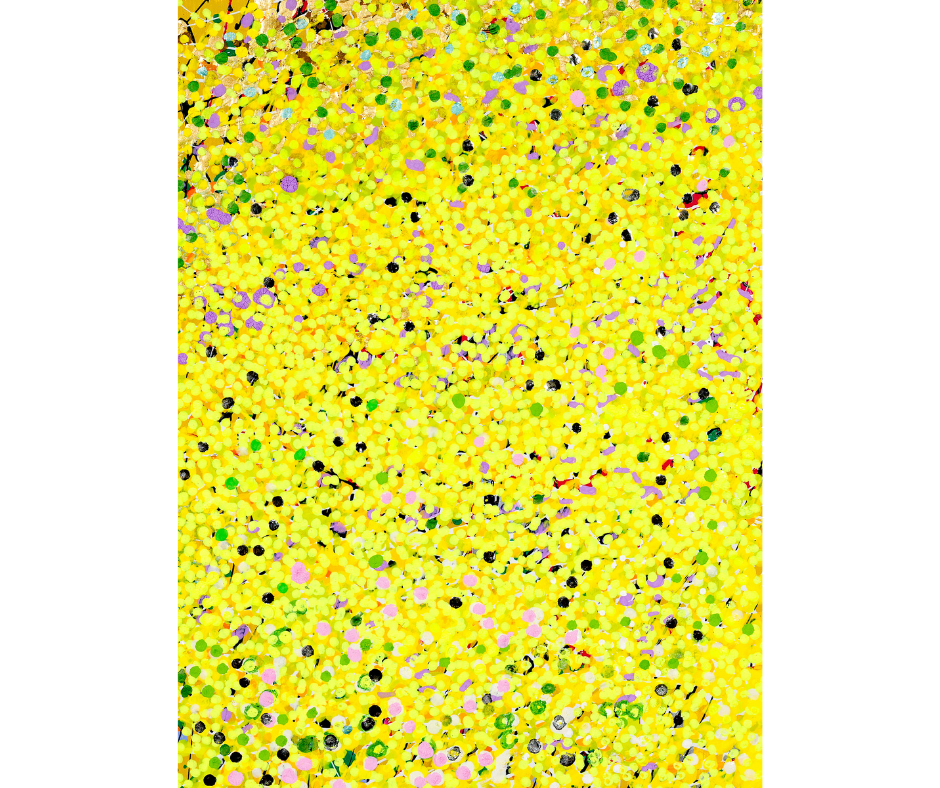COLOR IS VIBRATION— Ask Turrell, Agnes Martin, or Anyone Who’s Stood in Front of My Paintings
When I start a canvas I’m not really mixing paint; I’m tuning a field of tiny radio stations that happen to live in the visible band of the electromagnetic spectrum. Red light hums along at roughly 620–750 nanometers—about 400 terahertz in frequency—while violet screams past at closer to 380 nanometers, almost 790 terahertz . Knowing that lets me steer feeling with a bit more intention.
Turrell’s “Aten Reign” (Guggenheim rotunda)
Why Turrell’s rooms feel like they breathe
Step into a James Turrell Skyspace at dusk and you’re bathed in slow-shifting violets and ultramarines. Those shorter wavelengths tickle melanopsin receptors in the retina that set the brain’s master clock, which is why a Skyspace can leave you weirdly awake yet serene; the same slice of spectrum underpins the bright-light boxes doctors prescribe for winter blues . Turrell isn’t prescribing therapy, but the biology tags along for the ride.
Agnes Martin, “Untitled #5,” 1998
Agnes Martin’s barely-there grids and the nervous system
At the other extreme, Agnes Martin lets pigment whisper. Her pale peach or powder-blue washes hover just enough above neutrality to nudge the parasympathetic side of the autonomic nervous system—the one that slows the heart and lengthens the breath. Laboratory studies back her up: saturated reds raise blood pressure, while blues and soft greens settle it . That explains why viewers describe Martin’s canvases as “quiet,” even when they can’t name the color.
My own experiments: Rain & Sun, The Smell of Sea, Red Gleam
Rain & Sun sits in the mid-yellows, around 560 nanometers. I pepper the panel with chartreuse and lilac dots until the surface vibrates like heat haze on asphalt.
The Smell of Sea swims in turquoise near 480 nanometers—the same band that resets the circadian rhythm at dawn, which is why the painting feels like a lungful of coastal air. This was also the first painting I made after open heart surgery.
Red Gleam pushes toward 630 nanometers. Long-wave red dives deeper into tissue than any other visible hue, juicing mitochondrial ATP production and speeding wound healing in clinical tests . Viewers tell me they feel warmth in their chests before they even register the color.
Color, consciousness, and the slow brain waves
Meditators in every tradition latch onto color—gold in Tibetan tummo, indigo for yogic ajna—because the mind grabs a hue the way it grabs a mantra. Neuro-imaging shows that a single, steady color field quiets frontal chatter and lets alpha-theta rhythms spread across the cortex, the same pattern advanced meditators describe as spacious or non-dual awareness . Whether you reach that state in a Turrell ganzfeld, in front of a Martin grid, or by staring into the center of one of my dotted panels, the mechanism is strikingly similar.
Physics gives light its tempo, biology turns that tempo into mood and metabolism, and art weaves the two into an experience you can feel in your body. Whether you’re chasing Turrell’s sky, Martin’s hush, or my own color fields, you’re really surfing vibration. Tune in and see where it carries you.
Written with help of AI.





